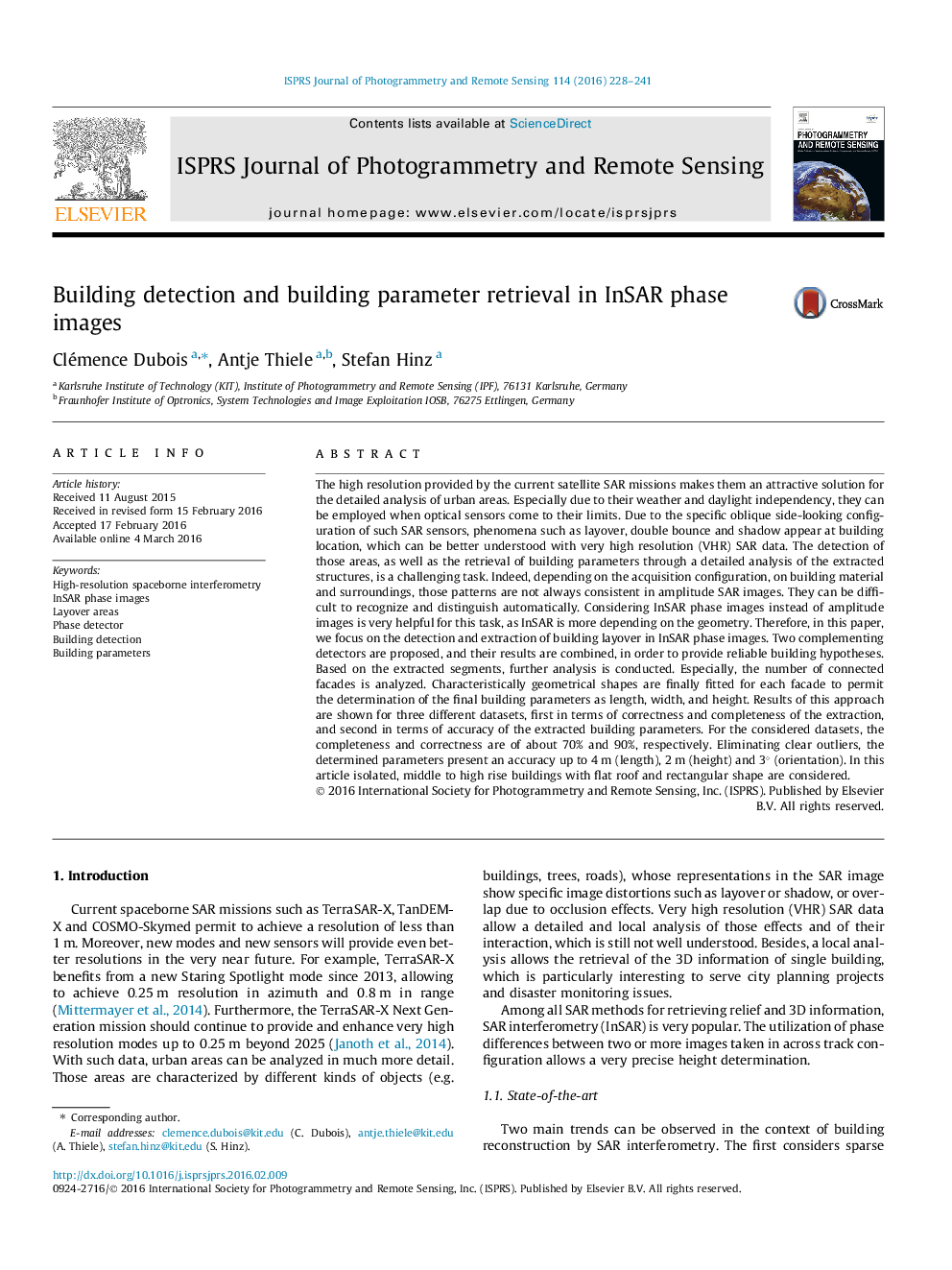| Article ID | Journal | Published Year | Pages | File Type |
|---|---|---|---|---|
| 555878 | ISPRS Journal of Photogrammetry and Remote Sensing | 2016 | 14 Pages |
The high resolution provided by the current satellite SAR missions makes them an attractive solution for the detailed analysis of urban areas. Especially due to their weather and daylight independency, they can be employed when optical sensors come to their limits. Due to the specific oblique side-looking configuration of such SAR sensors, phenomena such as layover, double bounce and shadow appear at building location, which can be better understood with very high resolution (VHR) SAR data. The detection of those areas, as well as the retrieval of building parameters through a detailed analysis of the extracted structures, is a challenging task. Indeed, depending on the acquisition configuration, on building material and surroundings, those patterns are not always consistent in amplitude SAR images. They can be difficult to recognize and distinguish automatically. Considering InSAR phase images instead of amplitude images is very helpful for this task, as InSAR is more depending on the geometry. Therefore, in this paper, we focus on the detection and extraction of building layover in InSAR phase images. Two complementing detectors are proposed, and their results are combined, in order to provide reliable building hypotheses. Based on the extracted segments, further analysis is conducted. Especially, the number of connected facades is analyzed. Characteristically geometrical shapes are finally fitted for each facade to permit the determination of the final building parameters as length, width, and height. Results of this approach are shown for three different datasets, first in terms of correctness and completeness of the extraction, and second in terms of accuracy of the extracted building parameters. For the considered datasets, the completeness and correctness are of about 70% and 90%, respectively. Eliminating clear outliers, the determined parameters present an accuracy up to 4 m (length), 2 m (height) and 3°3° (orientation). In this article isolated, middle to high rise buildings with flat roof and rectangular shape are considered.
